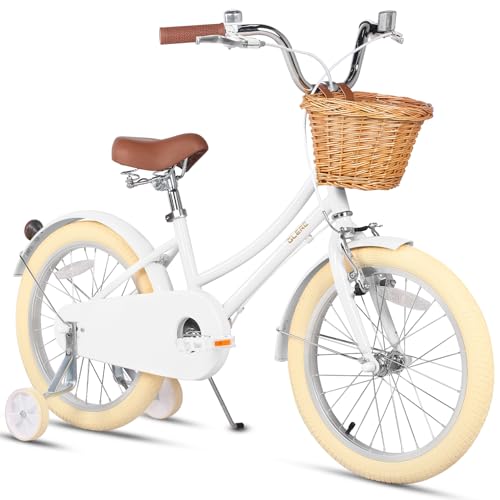Understanding the Different Types of Kids’ Bikes: Finding the Perfect Fit
Balance Bikes: The Ideal Starting Point
Balance bikes are a fantastic option for younger children, usually aged two to five. These bikes don’t have pedals, allowing kids to focus on balancing while gliding along. As they gain confidence and stability, children can transition to pedal bikes with ease. Balance bikes encourage independence and coordination, making them an excellent first bicycle.
Single-Speed Bikes: For Simplicity and Ease
Single-speed bikes are perfect for older kids who can handle pedalling and steering on their own. Typically designed for children aged five and up, these bikes offer a straightforward experience with no gears to fuss over. They are particularly suited for flat terrains and urban environments. Their simplicity allows kids to enjoy riding without the complication of gear shifts.
Multi-Speed Bikes: For Adventurous Little Riders
If your child is ready to tackle various terrains, consider a multi-speed bike, generally suitable for children aged seven and older. These bikes come with gears to help them navigate hills and different surfaces more easily. As they grow more proficient, multi-speed options allow them to explore further and take on more challenging rides.
Mountain Bikes: Built for Off-Road Fun
For adventurous kids who enjoy off-road trails and rugged paths, a mountain bike is a great choice. Typically suited for ages eight and up, these bikes feature sturdy frames and enhanced shock absorption for a smoother ride over uneven surfaces. They are designed to handle rough terrain, making them perfect for weekend adventures in nature.
Key Features to Look for in a Kids’ Bike: Safety and Comfort
Safety First: Understanding Brakes and Tyres
When selecting a kids’ bike, safety should always be our top priority. Look for bikes equipped with reliable brakes—hand brakes for older children and coaster brakes for younger ones. Also, pay attention to the tyres. Larger, durable tyres can provide more grip and stability, essential features when riding on various surfaces.
Comfort Matters: Seat and Handlebar Adjustability
A comfortable seat and adjustable handlebars make a significant difference in a child’s riding experience. Ensure the seat is cushioned and can be easily adjusted as your child grows. Handlebars should also be flexible in height. Both features contribute to a more enjoyable and less frustrating ride, allowing children to focus on mastering their skills.
Weight Consideration: Picking the Right Frame
The weight of the bike is crucial for kids, especially for those who are still developing their strength. A lighter bike allows for easier handling and control. Opt for a frame made from materials like aluminium or carbon fibre, as these options strike a balance between durability and weight.
Choosing the Right Size: A Simple Guide to Measuring for Your Child’s Bike
Measuring Height and Inseam Length
To find the perfect bike size, we need to measure two key dimensions: your child’s height and inseam length. For height, simply stand your child against a wall with their feet flat on the floor. For inseam, have them stand straight and measure from the inner thigh to the ground. These measurements will help determine the right frame size.
Understanding Size Charts and Bike Standards
Most bike manufacturers provide size charts that correlate frame sizes with the child’s height and inseam measurements. A general guideline is that the child should be able to stand over the top tube of the bike with their feet flat on the ground. This ensures not only comfort but also safety when mounting and dismounting.
Test Rides: Assessing Fit and Comfort
Once we have some options based on measurements, it’s wise to take the chosen bikes for a test ride. Have your child sit on the bike to ensure they can reach the pedals comfortably and can hold the handlebars with a relaxed posture. A bike that fits correctly can make all the difference in their enjoyment and confidence.
Popular Kids’ Bike Brands You Can Trust: Quality and Reliability
Brand Reputation: Choosing Established Manufacturers
When selecting a kids’ bike, we should look at well-established brands renowned for quality and safety. Brands that have garnered positive reviews from parents and riders are likely to offer durable options tailored for young riders.
Durability vs. Cost: Striking a Balance
While we want to find a budget-friendly bike, it’s crucial not to compromise on quality. Trustworthy brands often use better materials and offer warranties, ensuring the bike withstands rough use. Investing slightly more upfront can save money in the long run by avoiding frequent replacements.
User Reviews: Insights from Other Parents
Reading user reviews provides valuable insights into how a bike performs in real-world situations. It’s beneficial to look for comments on maintenance, repairs, and how the bike holds up over time, helping us make a fully informed decision.
Top Recommendations for Kids’ Bikes: Our Best Picks for Every Age Group
Best Picks for Toddlers: Balance and Stability
For toddlers, we recommend a lightweight balance bike such as the ‘Xtreme Balance Bike’. Its low frame ensures they can easily lift their feet and develop balance without the complication of pedals. Parents appreciate how quickly kids transition to traditional bikes after mastering this.
Popular Choices for Pre-Teens: Fun and Durable
For pre-teens, the ‘Razor BMX Bike’ comes highly recommended. Its robust construction can handle rough play, while the fun design appeals to kids. With features like a solid frame and responsive brakes, it’s a reliable choice for this age group.
Top Suggestions for Teens: Gear Variability
For teenagers, a multi-speed mountain bike such as the ‘Specialised Hotrock’ stands out. This bike offers versatility, with high-quality gearing for various terrains. Its frame design provides both comfort and performance, empowering them to tackle more challenging trails.




















